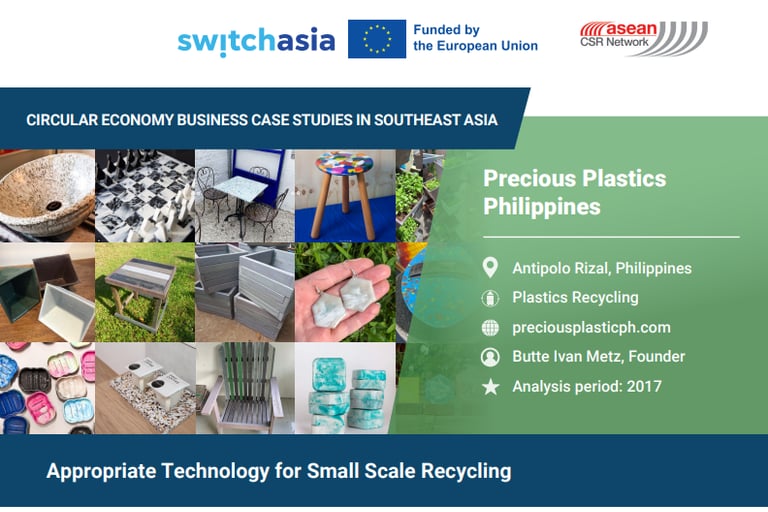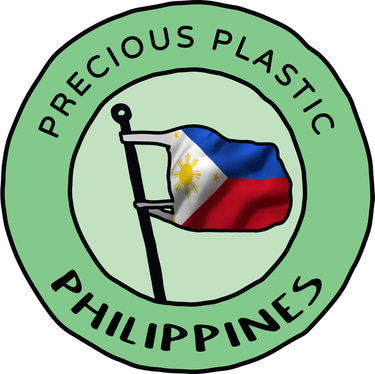Monetizing Waste Plastic: The Precious Plastic Philippines Model
8/2/20244 min read


Introduction to Waste Plastic and the Precious Plastic Philippines Initiative
The global waste plastic problem has evolved into a significant environmental and economic challenge. Each year, millions of tons of plastic waste end up in landfills, oceans, and other ecosystems, causing severe harm to wildlife, marine life, and human health. The Environmental Protection Agency (EPA) estimates that only a small percentage of plastic waste is recycled, with much of it being discarded improperly. This mismanagement not only pollutes our environment but also represents a lost economic opportunity, as recyclable plastics can be transformed into valuable new materials.
The Precious Plastic Philippines initiative emerges as a beacon of hope in combating this pervasive issue. Founded in response to the mounting plastic waste crisis, the initiative seeks to empower communities by providing the tools and knowledge needed to convert waste plastic into marketable products. The origins of Precious Plastic can be traced back to a global movement that started in the Netherlands. Its mission in the Philippines, specifically, aims to combine environmental stewardship with economic empowerment, fostering a local circular economy.
At the core of the Precious Plastic Philippines model lies the principle of transforming waste plastic into precious resources. By utilizing simple, low-cost machines and fostering collaborative local workshops, the initiative enables individuals and communities to upcycle their plastic waste. These upcycling efforts result in the creation of diverse, practical products such as furniture, home decor, and even building materials. What sets this approach apart is its emphasis on local engagement and sustainability, encouraging communities to take ownership of their plastic waste and view it as a resource rather than refuse.
By bridging the gap between environmental sustainability and economic opportunity, Precious Plastic Philippines not only addresses the immediate plastic waste problem but also fosters a culture of creativity and innovation. This grassroots initiative is a testament to the power of collective action in tackling global challenges and transforming the trajectory of plastic waste management for future generations.
The Process: Turning Trash into Treasure
Precious Plastic Philippines adopts a meticulous and systematic approach to converting waste plastic into valuable commodities. The process commences with the collection and sorting of plastic waste, a crucial phase that involves active community participation. Volunteers and partners assist in gathering plastic waste from various sources, such as households, businesses, and local events. The waste is then categorized according to its type—Polyethylene Terephthalate (PET), High-Density Polyethylene (HDPE), and other significant plastic varieties—to ensure efficient recycling.
Once sorted, the plastic undergoes a thorough cleaning process to remove contaminants and impurities. This cleaned plastic is then carefully shredded into smaller, more manageable pieces using specialized shredding machines. The shredded plastic is the primary raw material for creating new products.
Precious Plastic Philippines employs a range of advanced recycling and upcycling techniques. Injection molding machines are used to shape plastic into a variety of functional items, such as containers, toys, and everyday household goods. Extrusion allows for the creation of unique, intricate designs by forcing the plastic through a die to form continuous shapes like beams or pilasters, which can be further processed or directly utilized. Furthermore, compression molding techniques are harnessed to generate stiffer, bulkier items like tiles and furniture components.
The final products are not only practical but also environmentally friendly and aesthetically appealing. Items such as custom furniture pieces, decorative objects, and construction materials embody the philosophy of turning waste into a resource.
Community involvement remains pivotal throughout the entire process. Precious Plastic Philippines conducts workshops, training sessions, and educational campaigns to drive awareness and foster a culture of sustainability. Local artisans collaborate with the organization, contributing their expertise to the design and creation of innovative products, thereby enhancing the initiative's impact and reach.
Through this integrated and collaborative effort, Precious Plastic Philippines successfully transforms plastic waste into valuable resources, promoting environmental stewardship and stimulating economic growth within local communities.
Economic and Social Impact of the Precious Plastic Philippines Model
The Precious Plastic Philippines Model has demonstrated significant economic and social benefits through its innovative approach to waste plastic management. By monetizing waste plastic, the model has created numerous job opportunities, particularly in local communities where employment options are limited. Small-scale recycling businesses have emerged, providing stable incomes to many individuals and families. This not only stimulates local economies but also encourages entrepreneurship and innovation in the recycling sector.
Moreover, the initiative contributes to reducing environmental pollution by diverting plastic waste from landfills and oceans, transforming it into valuable products. The reduction in plastic waste has a direct positive impact on both terrestrial and marine ecosystems, promoting sustainability. Communities adopting this model become more environmentally conscious, fostering a culture of recycling and sustainable living.
Success stories abound within the Precious Plastic Philippines network. For example, in Cebu, a cooperative started by local women has successfully turned discarded plastic into a profitable enterprise, producing eco-friendly products such as tiles, furniture, and household items. Testimonials from participants highlight how the model has not only improved their economic standing but also instilled a sense of purpose and pride in contributing to a global environmental cause.
Looking ahead, the Precious Plastic Philippines Model holds vast potential for expansion and replication in other regions or countries. To achieve this, it is essential to establish partnerships with local governments, NGOs, and private enterprises. Training programs and workshops can be conducted to educate and empower communities to implement the model effectively. Additionally, leveraging digital platforms for crowdfunding and knowledge sharing can accelerate the model’s adoption on a larger scale.
In conclusion, the Precious Plastic Philippines Model is not just an effective waste management solution; it is a catalyst for economic empowerment and social change. By continuing to innovate and expand, this model can pave the way for a more sustainable and economically resilient future.
Contacts
call or use the form to send a message
Socials
Subscribe to our newsletter
+639151385341


